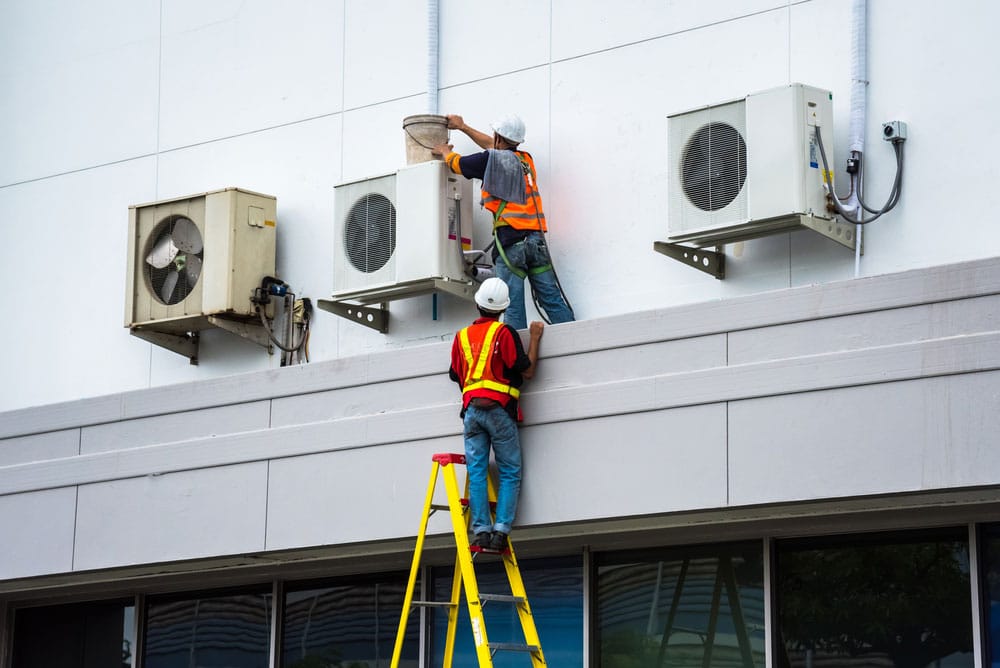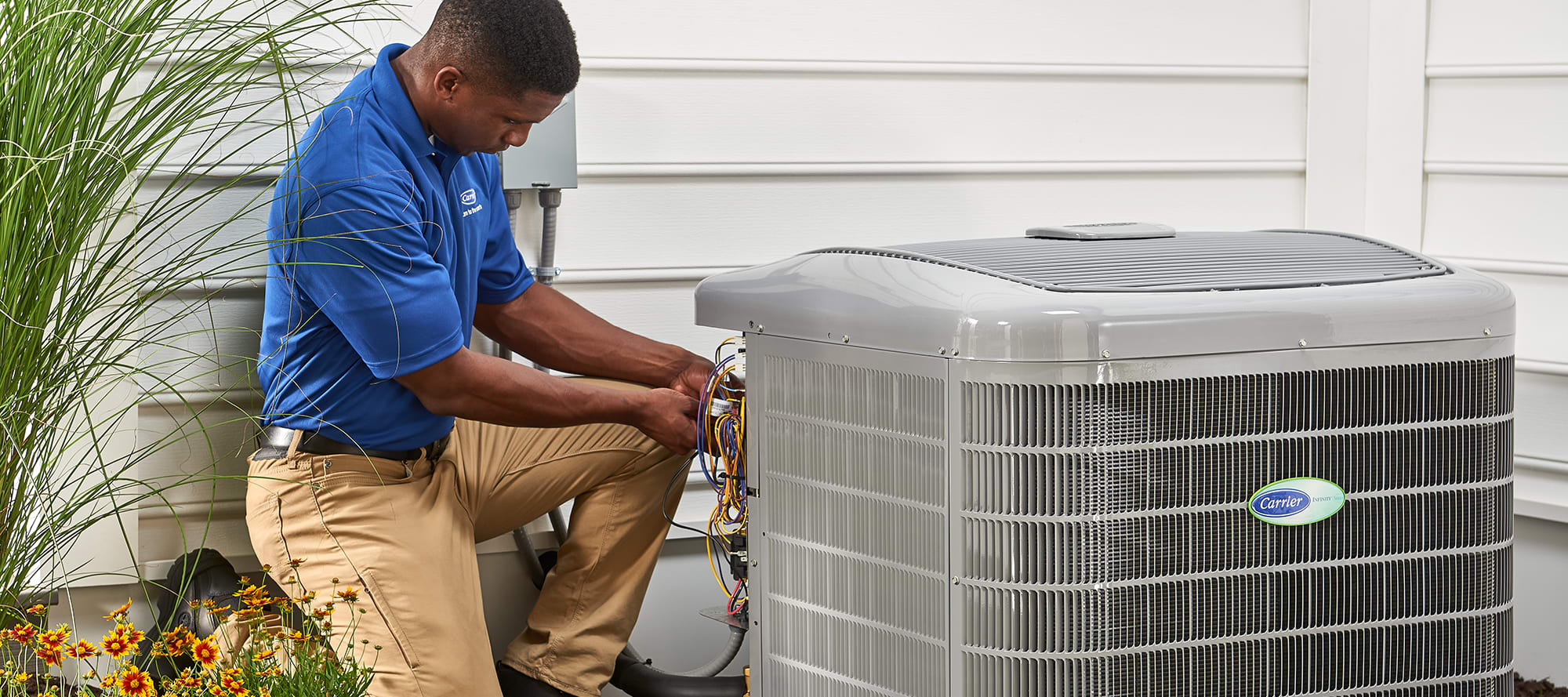Evaluating Your Room: Key Dimensions for Air Conditioning Installment

If you have actually ever located on your own in a room where the air conditioning simply couldn't seem to stay up to date with the summer heat, you may take advantage of assessing your room.
Ensuring your air conditioning system is correctly sized and installed requires attention to essential measurements such as area dimension, window and door dimensions, ceiling height, insulation quality, and airflow patterns. By recognizing these elements, you can enhance your cooling system's efficiency and efficiency.
But how precisely do these measurements effect your cooling installment?
Key Takeaways
- Accurately determine area dimensions for proper unit ability and air movement optimization.
- Pick energy-efficient windows and doors to enhance insulation and minimize warm transfer. https://foresthillacinstallation.co.uk
- Make certain ideal vent placement and unhampered air flow for effective cooling circulation.
- Upgrade insulation to boost thermal resistance, seal spaces, and improve total system performance.
Space Dimension Measurements
When measuring room dimension for cooling installment, make sure you accurately assess the dimensions to establish the appropriate device ability. Start by taking into consideration furniture placement within the area. Furnishings can block air circulation if put too near vents or the a/c unit. To ensure optimal air conditioning performance, arrange your furniture in such a way that promotes correct air flow throughout the room.
Furthermore, take into consideration the room's format and size when planning for air blood circulation. Appropriate air flow is vital for maintaining a consistent temperature throughout the space. Be mindful of any challenges that can interfere with the circulation of air, such as drapes obstructing vents or big pieces of furnishings obstructing air movement. By ensuring appropriate room for air to circulate easily, you can take full advantage of the efficiency of your air conditioning unit and produce a comfortable atmosphere in your house.
Doors And Window Dimensions
To ensure appropriate a/c installment, assess the measurements of doors and windows in the room to optimize air movement and cooling down performance. When reviewing doors and window dimensions, think about the following:
- Structure Compatibility: Ensure that the a/c device you pick works with the structures of your windows and doors. Inappropriate fit can cause air leakages and lowered power efficiency.
- Installment: Take into account the installation process when picking an a/c system. Some systems may need certain home window dimensions or added alterations for correct installation.

- Material Choice: Pick windows and doors made from materials that provide great insulation to enhance energy effectiveness. Properly insulated windows and doors can assist maintain a constant temperature in the area.
- Energy Efficiency: Opt for energy-efficient windows and doors to decrease warmth transfer and boost the total effectiveness of your cooling system. Energy-efficient materials can boost the air conditioning abilities of your area while decreasing energy costs.
Ceiling Height Analysis
Reviewing the height of your ceiling is critical for identifying the very best placement of air conditioning vents for reliable cooling distribution. When appraising your ceiling elevation, make sure to take into consideration the clearance needed for both the ductwork and the cooling vents. Ample ceiling clearance assurances that the ductwork can be set up appropriately without any obstructions, permitting suitable air flow throughout the area.
Additionally, appropriate clearance over the vents ensures that the cooled down air can distribute openly without any constraints, bring about more even cooling in the room.
When preparing the positioning of ductwork, think about the elevation of your ceiling to avoid any kind of concerns with installment or performance. Correctly located ductwork can assist make best use of the performance of your a/c system and see to it that each room receives sufficient cooling.
Insulation Analysis
Assess the insulation top quality to maximize the performance of your air conditioning system. Appropriate insulation plays an essential function in keeping a comfy indoor setting while maximizing energy performance. Below are 4 key points to examine when assessing the insulation in your space:
- Thermal Resistance: Inspect the R-value of your existing insulation to make certain it satisfies the recommended criteria for your region. Higher thermal resistance indicates much better insulation high quality, which aids in decreasing heat transfer and maintaining a regular temperature level.
- Insulation Placement: Examine the positioning of insulation throughout your room, focusing on areas such as walls, ceilings, and floorings. Correctly set up insulation stops power wastage by minimizing heat exchange with the surrounding setting.
- Sealing Spaces: Identify and secure any kind of voids or splits in the insulation to stop air leakage. Appropriately secured insulation enhances power effectiveness by keeping impermeable obstacles that protect against conditioned air from leaving.
- Upgrading Insulation: Consider updating your insulation to more recent, much more energy-efficient materials. Updating can improve thermal resistance, decrease power usage, and boost the general performance of your a/c system.
Airflow Evaluation
Checking the air movement within your space is important for guaranteeing peak efficiency of your a/c system. Correct airflow distribution is vital to keep constant temperature levels throughout the area. When examining airflow, consider the ventilation requirements of each area to ensure adequate air circulation.
To analyze air movement circulation, begin by looking for any obstructions such as furnishings obstructing vents or particles blocking air ducts. Poor air flow can bring about inefficient air conditioning and heating, resulting in discomfort and enhanced power costs. It is very important to address any concerns promptly to optimize the efficiency of your a/c system.

Furthermore, recognizing the ventilation requirements of different rooms in your home or workplace is vital to maintaining air high quality and comfort degrees. Appropriate ventilation assists remove stale air, odors, and toxins while generating fresh outside air. By reviewing airflow and ventilation needs, you can create a more comfortable and healthy interior setting for every person.
Regularly Asked Questions
Exactly How Can I Determine the most effective Place for My Air Conditioning Unit Within the Room?
When finding out the best place for your air conditioner system in an area, take into consideration the cooling ability and air blood circulation. Keep the device away from obstacles that can block air flow and location it centrally in the space to ensure even cooling down.
Perfect positioning aids disperse cool air successfully, optimizing the device's efficiency. Proper positioning can make a considerable distinction in just how successfully your ac unit cools the room.
Exist Any Kind Of Details Factors to Consider When Installing an A/c System in a Multi-Level Structure?
When setting up an air conditioning device in a multi-level building, take into consideration elements like energy effectiveness, cooling down capacity, placement, and availability.
Ensure the system is strategically put to cool down multiple levels successfully. Choose a location that permits very easy access for maintenance and repairs.
In addition, evaluate the cooling ability to ensure it can adequately cool the whole structure. These factors to consider will assist enhance the performance of your cooling system in a multi-level setting.
What Is the Ideal Range Between the A/c Device and Any Kind Of Heat-Producing Home Appliances in the Area?
When placing your air conditioning system, make certain correct ventilation distance from heat-producing devices in the room. This assists with heat dispersion and prevents the AC from functioning tougher to cool down the room.
Go for an ideal range of at least 3 feet in between the air conditioner device and any type of warm resources like stoves or lamps. Maintaining this separation will optimize the effectiveness of your a/c system and prolong its life expectancy.
Exist Any Possible Hazards That I Should Recognize When Installing an Air Conditioning System in a Tiny or Encased Space?
When installing a cooling device in a tiny or encased area, bear in mind possible hazards. Make certain to deal with ventilation problems to stop air high quality problems. Take safety precautions seriously, particularly with limited space restrictions.
Know setup obstacles like proper placement for finest performance. Prioritize safety and security and make sure your room is well-ventilated to avoid any type of risks associated with setting up a cooling unit in a restricted area.
How Can I Make Certain Correct Air Flow for My Air Conditioning Device to Operate Efficiently in a Space With Limited Air Flow?
To optimize air flow for your cooling device in an area with restricted airflow, assurance proper ventilation by maintaining vents clear and unhampered.
Consistently clean or change air filters to preserve efficiency.
Take into consideration utilizing a follower to assist distribute air and stop stationary pockets.
Setting the device in a place where air can move openly, staying clear of confined areas.
These steps will certainly help your a/c unit run effectively and cool the area effectively.
Conclusion
Now that you have actually taken vital dimensions for your air conditioning installation, you're one action more detailed to guaranteeing peak cooling efficiency in your space.
By accurately evaluating space size, doors and window measurements, ceiling elevation, insulation, and air movement, you can make enlightened decisions on the most effective air conditioner system for your requirements.
Bear in mind, correct dimensions are vital for a successful and reliable a/c installation.
